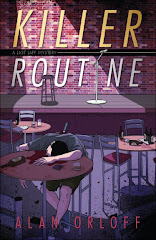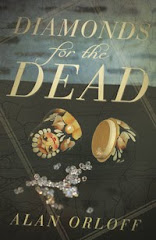From a single idea, how do you build enough
of a story to fill a book?
This question is not relevant to my writing process because the plots and characters of my novels appear to me fully-formed.
Yeah, right.
That might be true if my books were two pages long, but when I set out to write a book with 80,000+ words, I know some additional story-building is always in order.
I begin with the premise—compelling characters facing an interesting dilemma—and work outward, always looking for ways to complicate my protagonist’s quest to accomplish his/her goals. A lot of that work takes the form of What If questions. What if he discovers his father’s not really his father? What if his girlfriend turns out to be a Martian envoy sent to negotiate a peace treaty with Earth? What if he studies at the feet of the Dalai Lama, then challenges him to a duel with nunchuks? What if dogs could talk and walk on two legs and drive cars, but still needed to use fire hydrants as bathrooms? (Obviously, some What If questions lead to more promising plot events than others.)

Rinse. Repeat. Increase the stakes.
After some time (weeks, months, eons), I’ll eventually reach The End. Then I sit back and examine what I’ve got. Usually it’s a steaming hot mess of cardboard characters, hokey plot twists, and generic settings (and those are the good parts!).
That’s when the revision process begins. I whittle away all the garbage (Martian envoy? Really?) and bolster all the good stuff. If I need more plot, I generate more What If scenarios. Slowly, painfully, things fall into place and my steaming hot mess begins to actually make sense.
At least that’s the plan.
(This entry is “simul-posted” on Criminal Minds.)





















No comments:
Post a Comment